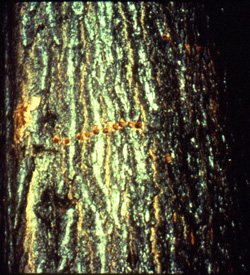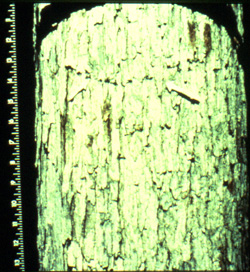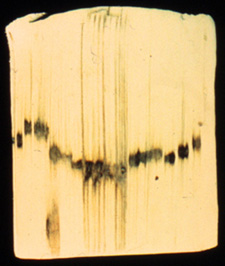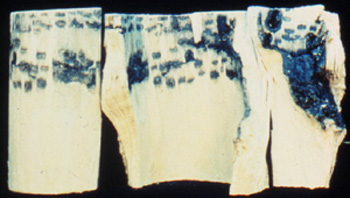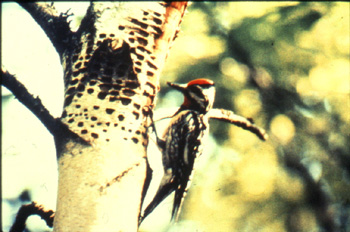
| Home |
| Tutorial |
| Photo Gallery |
| List of Defects |
| Links |
| Bark Distortion |
| Bird Peck |
| Bumps |
| Burls |
| Butt Scars |
| Butt Swells |
| Cankers |
| Conks |
| Epicormic Branches |
| Flanges |
| Flutes |
| Forks |
| Galls |
| Holes |
| Knots |
| Lesions |
| Limbs |
| Ring Shake |
| Rot |
| Seams |
| Soak |
| Splits |
| Wounds |
Two cautions in connection with fresh or light birdpeck must be considered. First, trees so damaged generally have been subject to previous and often repeated attacks and in such cases have occluded holes. The nesting and wintering habits of the yellow-bellied sapsucker cause it to return to the same areas and trees year after year. The second caution applies to the hickory, where even light birdpeck often results in circular columns of purple stain running from the point of attack to the ground. This stain may not be a defect on lumber but it does degrade handle stock.
Heavy birdpeck is older due to repeated annual attacks and usually is accompanied by occlusions. The damage extends into the wood in the form of bark flecks, callus pockets, and stain spots, epecially in elm and the white oaks. In most species heavy birdpeck is a log grade defect in factory logs.
Birdpeck causes serious damage in elm, hickory, paper birch, sweetgum, red maple, yellow poplar, and water oak, and somewhat less serious damage in other maple and oak species.
